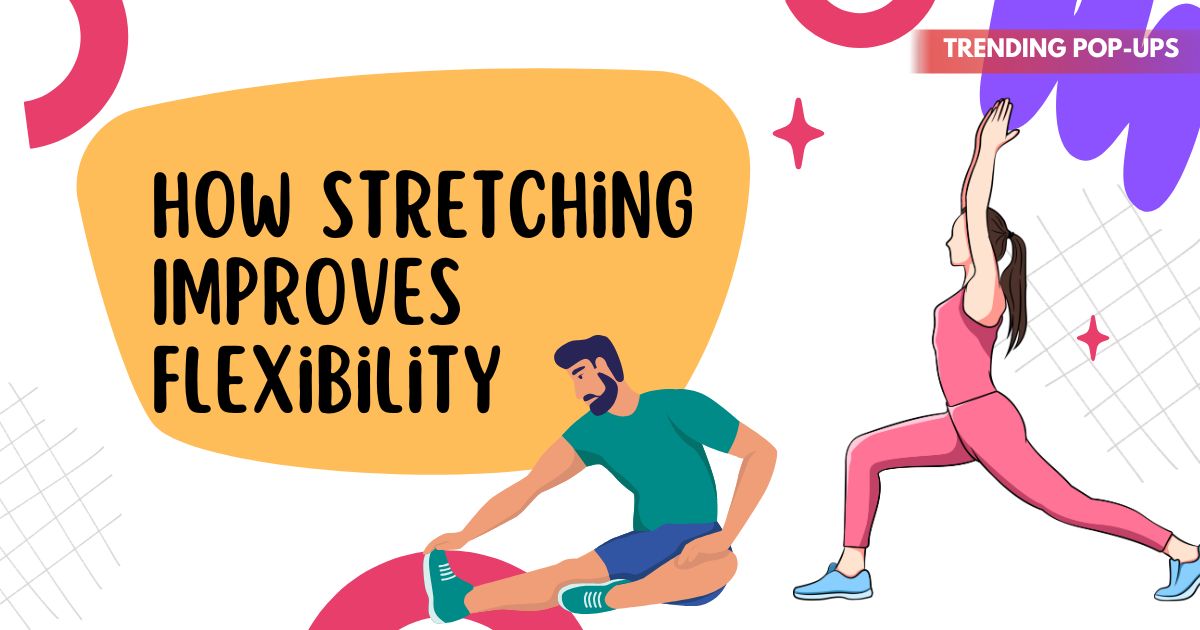Stretching is often considered a simple part of a workout routine, but its impact on the body goes far beyond just loosening tight muscles. One of the key benefits of stretching is its ability to improve flexibility, which plays a vital role in overall health, posture, and physical performance. Whether you’re an athlete, a fitness enthusiast, or someone seeking better mobility in daily life, incorporating stretching into your routine can make a remarkable difference.
In this article, we’ll explore how stretching improves flexibility, the science behind it, the different types of stretching, and the benefits it brings to your body and mind.
What is Flexibility?
Flexibility refers to the ability of muscles and joints to move through their full range of motion without pain or restriction. High flexibility reduces stiffness, prevents injuries, and supports functional movements in everyday activities. Stretching helps improve flexibility by gradually elongating muscles, tendons, and ligaments, which enhances mobility and balance.
The Science Behind Stretching and Flexibility
When you stretch a muscle, you lengthen the muscle fibers and increase blood circulation to the targeted area. Over time, this consistent practice trains the muscle to extend further without strain. Here’s how it works:
-
Muscle fibers adapt: Repeated stretching improves the elasticity of muscle tissues.
-
Nervous system response: Stretching reduces the “stretch reflex,” a natural protective response that limits muscle extension. With regular practice, your body allows a greater range of motion.
-
Joint mobility: Stretching enhances the flexibility of connective tissues around joints, allowing smoother, pain-free movement.
Types of Stretching That Improve Flexibility
1. Static Stretching
This involves holding a stretch in one position for 15–60 seconds. It’s highly effective for increasing flexibility and is often performed after workouts when muscles are warm.
2. Dynamic Stretching
Dynamic stretches use controlled movements to prepare muscles for activity. Examples include arm circles, leg swings, and walking lunges. These stretches improve flexibility and reduce the risk of injury during physical activities.
3. PNF Stretching (Proprioceptive Neuromuscular Facilitation)
PNF involves a combination of stretching and contracting the muscle. Often done with a partner or resistance band, PNF is one of the fastest methods for increasing flexibility.
4. Ballistic Stretching
This type uses bouncing movements to push muscles beyond their normal range. While effective for some athletes, it should be done cautiously as it can increase the risk of injury.
5. Active and Passive Stretching
-
Active stretching: Involves using your own muscles to hold a position (e.g., lifting your leg and holding it without support).
-
Passive stretching: Uses external forces, like a partner or equipment, to help hold the stretch.
Benefits of Stretching for Flexibility
Improves Range of Motion
Regular stretching allows muscles and joints to move freely, improving athletic performance and daily mobility. Tasks like bending, reaching, and twisting become easier with better flexibility.
Prevents Injuries
Tight muscles are more prone to strains and tears. Stretching enhances flexibility, reducing the risk of injuries by keeping muscles and joints well-prepared for sudden movements.
Enhances Posture and Balance
Poor flexibility can cause muscle imbalances that lead to slouching or poor posture. Stretching improves muscle alignment, strengthens stabilizing muscles, and promotes balance, reducing the risk of falls.
Reduces Muscle Stiffness and Pain
Stretching relieves tension in tight muscles, reducing stiffness and soreness. It is especially beneficial for people with sedentary lifestyles or jobs that involve sitting for long hours.
Boosts Athletic Performance
Flexibility improves speed, strength, and agility. Athletes benefit from stretching as it prepares their bodies for high-intensity movements and supports recovery after training.
Improves Blood Circulation
Stretching increases blood flow to muscles, which delivers oxygen and nutrients while removing metabolic waste. Better circulation contributes to faster recovery and healthier tissues.
How to Stretch Effectively for Flexibility
-
Warm Up First: Stretching cold muscles can cause injuries. Always start with light cardio before stretching.
-
Be Consistent: Flexibility improves with regular practice. Aim for at least 10–15 minutes of stretching daily.
-
Don’t Force It: Stretch until you feel slight tension, not pain. Overstretching can cause muscle damage.
-
Focus on Major Muscle Groups: Target hamstrings, quadriceps, calves, hip flexors, shoulders, and back for the best results.
-
Combine Different Techniques: Incorporating static, dynamic, and PNF stretches provides maximum benefits.
Long-Term Effects of Stretching on Flexibility
When done consistently, stretching leads to long-lasting improvements in flexibility. Over weeks and months, muscles adapt to extended ranges of motion, joints become more mobile, and movements feel smoother and less restricted. This translates into better overall health, reduced injury risks, and improved quality of life.
FAQs
Q1. How long does it take to improve flexibility with stretching?
With consistent stretching, noticeable improvements in flexibility can be seen within 3–4 weeks, depending on individual fitness levels.
Q2. Is stretching better before or after a workout?
Dynamic stretching is recommended before workouts to warm up muscles, while static stretching is more effective after workouts for improving flexibility.
Q3. Can stretching alone make me flexible?
Yes, but combining stretching with strength training enhances results, as strong muscles support flexible movements.
Q4. How often should I stretch for flexibility?
Stretching at least 5 days a week for 10–15 minutes can significantly improve flexibility.
Q5. Can stretching reduce back pain?
Yes. Stretching relieves tension in the spine and supporting muscles, improving posture and reducing lower back pain.



